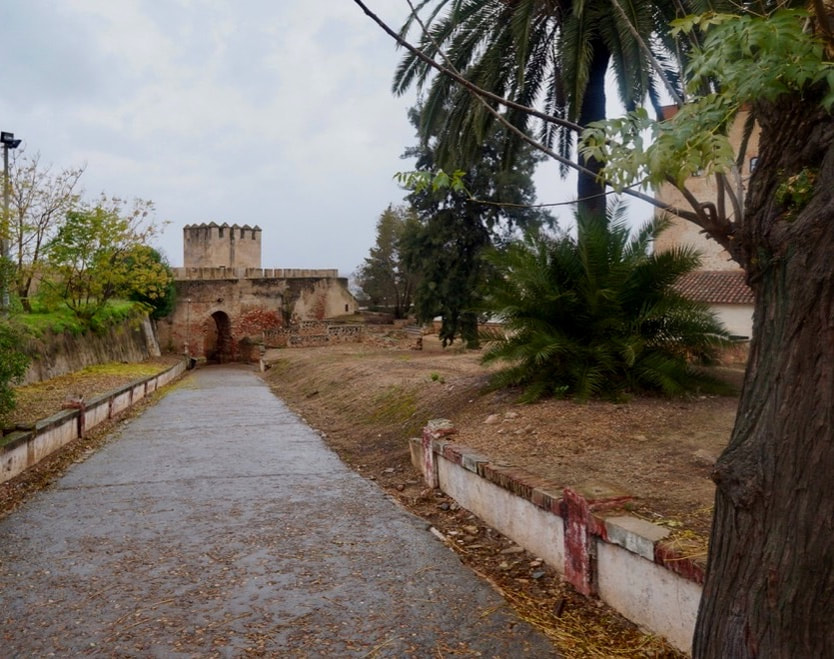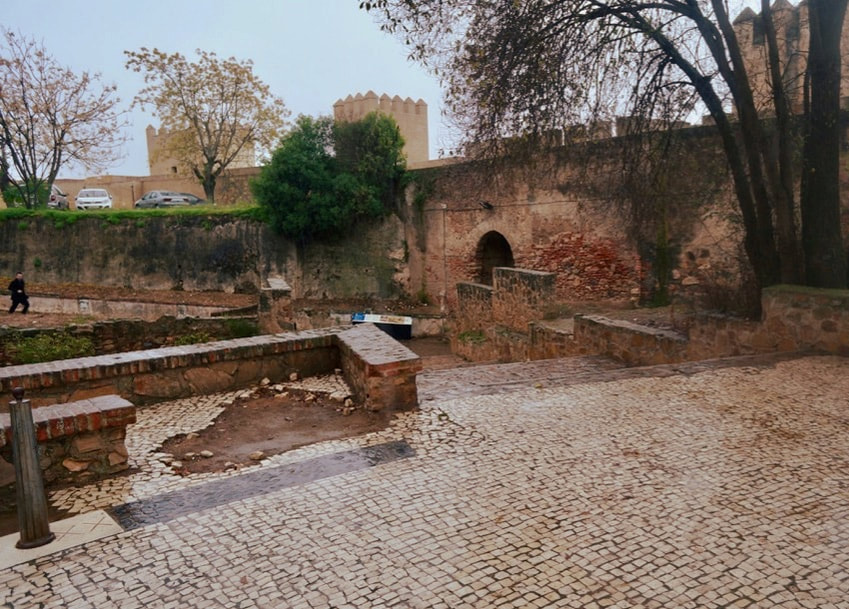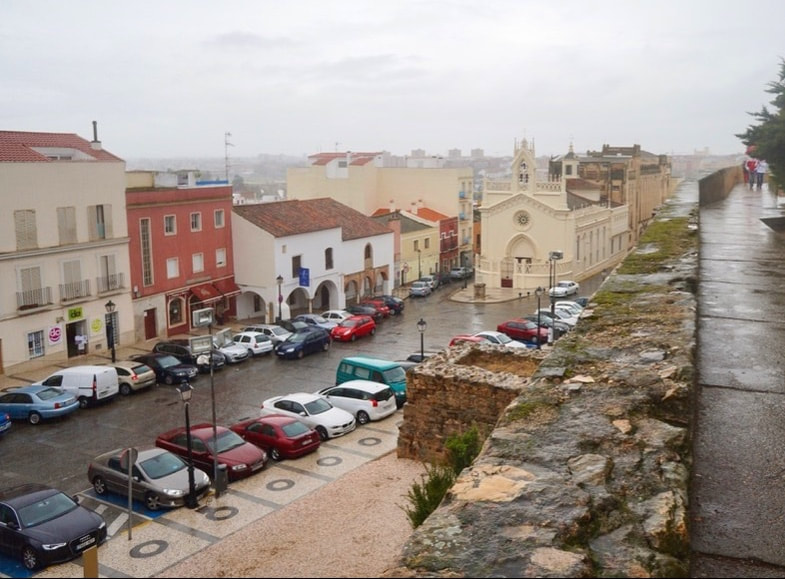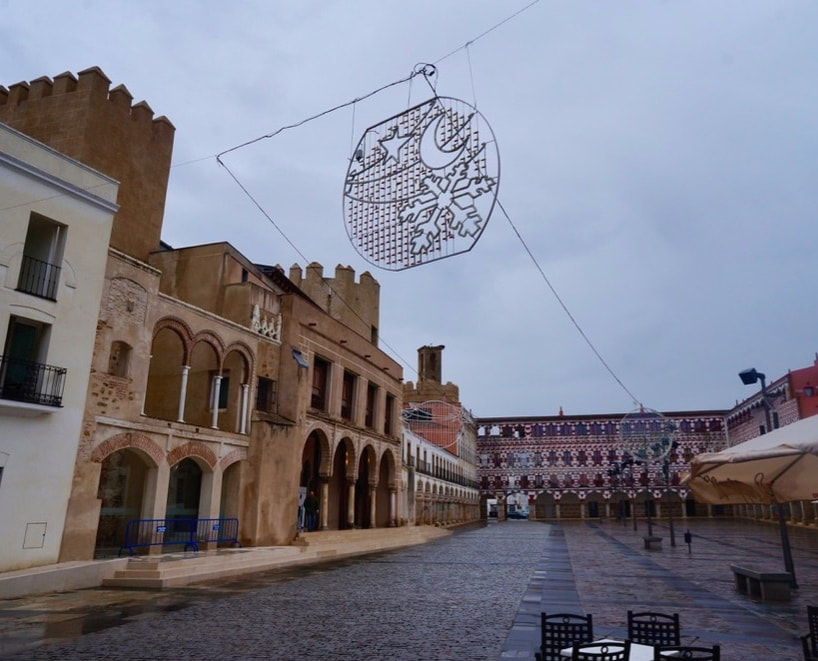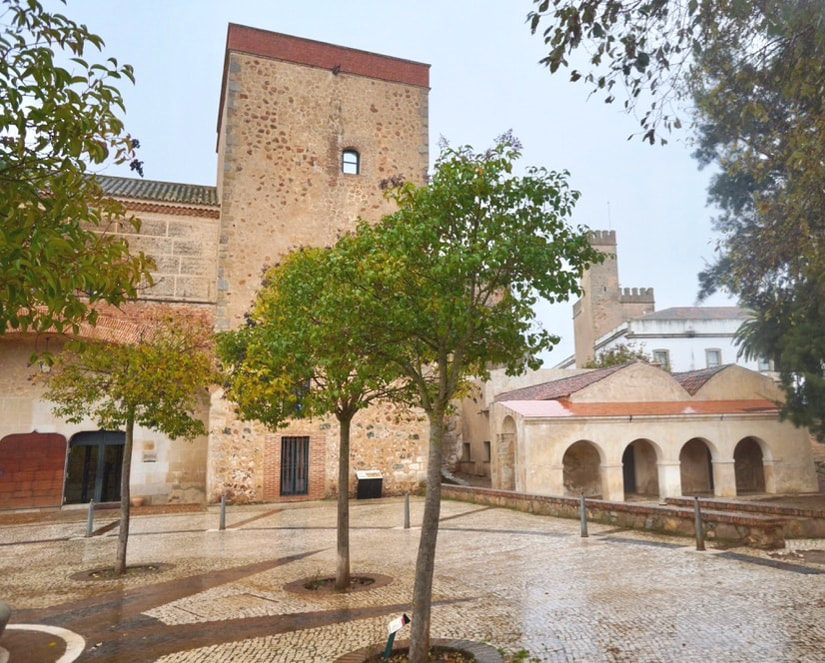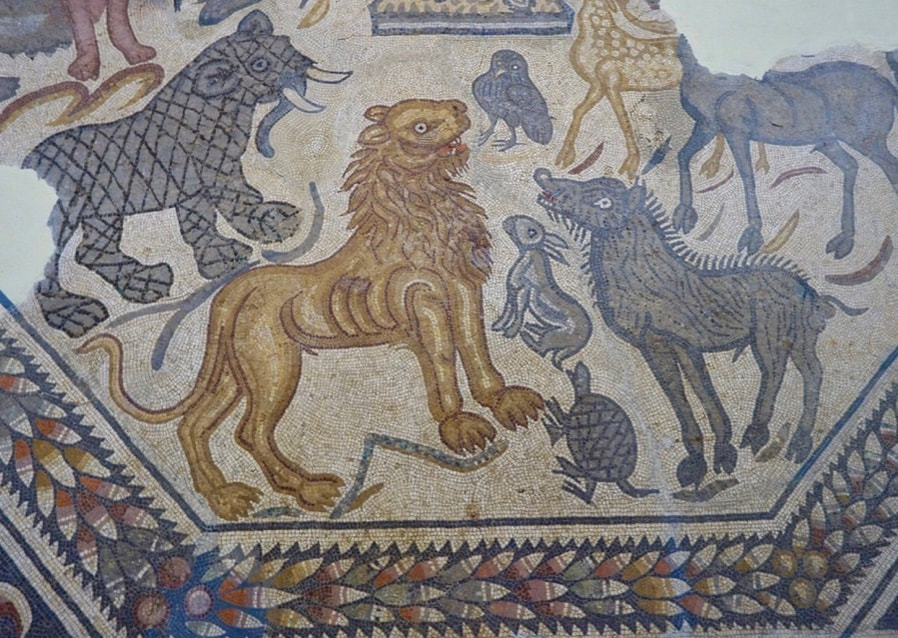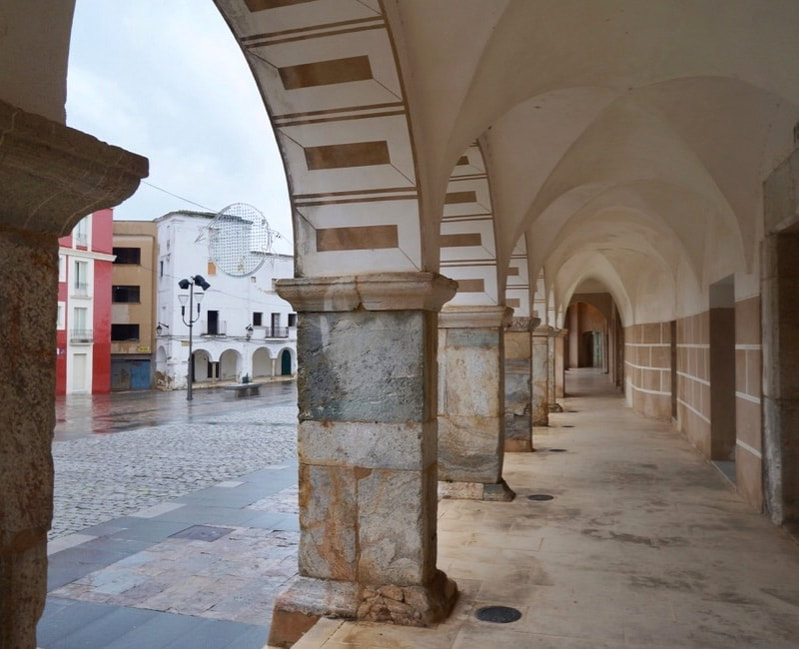Why Visit Badajoz
As the legendary site of one of history's great battles, Badajoz glowers down the 60-foot wall at the crossroads of a major river and a strategic highway between Portugal and Spain.
This bastion city blocked Arthur Wellesley's (later the Duke of Wellington) access to Napoleon's armies. This gruesome battle changed Britain's view of its military behaviour forever.
This bastion city blocked Arthur Wellesley's (later the Duke of Wellington) access to Napoleon's armies. This gruesome battle changed Britain's view of its military behaviour forever.
The Siege of Badajoz
In March of 1812, Arthur Wellesley, with 25,000 men, arrived at the base of the gigantic walls of Badajoz to defeat Philippon, the French General who, with his 4700 men, was charged with defending the city.
The siege was working well, but when word came that Marshall Soult was marching to help Philippon, Wellington knew his time had run out.
Fortunately, he had his veteran regiments and the legendary Green Jackets, the riflemen made famous by Sharpe. Against all odds and with forlorn hope, on the night of 6 April 1812, the British troops climbed over their own dead and savagely breached the walls, absorbing 2000 casualties.
In March of 1812, Arthur Wellesley, with 25,000 men, arrived at the base of the gigantic walls of Badajoz to defeat Philippon, the French General who, with his 4700 men, was charged with defending the city.
The siege was working well, but when word came that Marshall Soult was marching to help Philippon, Wellington knew his time had run out.
Fortunately, he had his veteran regiments and the legendary Green Jackets, the riflemen made famous by Sharpe. Against all odds and with forlorn hope, on the night of 6 April 1812, the British troops climbed over their own dead and savagely breached the walls, absorbing 2000 casualties.
What followed the triumph of victory was a level of misbehavior by the British that is still a legend in the histories of looting and rape. It took nearly three days to restore order, and the children of the children of the city's population still shudder on the anniversary of that event.
It would forever be an event that Wellington regretted and a stain on the record of British judgment and fairness.
Below is the BBC documentary that explains the battle well, showing in today's Badajoz the significant points of interest. It's an excellent video to watch before you visit.
It would forever be an event that Wellington regretted and a stain on the record of British judgment and fairness.
Below is the BBC documentary that explains the battle well, showing in today's Badajoz the significant points of interest. It's an excellent video to watch before you visit.
As we stood at the foot of the walls in the 21st century, it's almost impossible for us to imagine the ferocity of the British climbing enormous ladders under the constant fire of the French.
As more and more of the British soldiers died, the anger of the regiments at the pointlessness of the continued French resistance led inevitably to the savage reprisals that followed.
The battle saw 65 % of the French soldiers killed, and 5 British Generals also met their end. As with most military victories, it was a human tragedy, especially for the blameless citizens of Badajoz.
As more and more of the British soldiers died, the anger of the regiments at the pointlessness of the continued French resistance led inevitably to the savage reprisals that followed.
The battle saw 65 % of the French soldiers killed, and 5 British Generals also met their end. As with most military victories, it was a human tragedy, especially for the blameless citizens of Badajoz.
Is Badajoz Worth Visiting?
Today, the city remains with its massive walls protected by the Guadiana and Rivilla Rivers. As intimidating a site as it was so long ago, but now, inside the walls exists a modern, very walkable city that is worth a visit even if you care nothing for the crushing impact of wars on the history of Portugal and Spain.
We went back a second time to try to see the modern city without the smoke of history, and it revealed itself as well worth the second effort. Museums, parks, restaurants, and visual memories of the Moorish centuries were worthwhile.
The Tourism Center has all the information, and the pride the staff had in their city was gratifying.
Today, the city remains with its massive walls protected by the Guadiana and Rivilla Rivers. As intimidating a site as it was so long ago, but now, inside the walls exists a modern, very walkable city that is worth a visit even if you care nothing for the crushing impact of wars on the history of Portugal and Spain.
We went back a second time to try to see the modern city without the smoke of history, and it revealed itself as well worth the second effort. Museums, parks, restaurants, and visual memories of the Moorish centuries were worthwhile.
The Tourism Center has all the information, and the pride the staff had in their city was gratifying.
What to See in Badajoz
Badajoz must be on your travel list when you visit Spain. Its museums, courtyards, and memories of Roman times are all displayed in its architecture and the objects in its museums.
1. The Alcazaba
Given its geography and history, the Alcazaba is the most prominent structure in Badajoz, and it is a testament to the Moorish influence, having been built by Ibn Marwan in the 9th century. This place was also the official residence of the rulers of the Taifa of Badajoz in the 11th and 12th centuries before their expulsion.
Fortified by Yaqub Yusuf in 1169, it became the most important fort on the Portuguese border in the 17th and 18th centuries and the staging point of other Portuguese invasions.
This Moorish Fortress tells a very popular legend,The Legend of Luna. According to the locals, hidden deep inside the walls of the Alcazaba, is a treasure known as Luna's Money.
Luna was a Moorish princess who fell in love with a Christian knight. When her father disapproved of their relationship, they decided to escape together, carrying all the gold and treasures they could lay their hands on. Eventually caught, however, Luna's father ordered her execution.
Before her death, she hid the treasure somewhere within the Fortress. It is still there for the adventurous to discover. The Fortress now houses the Badajoz Provincial Archaeological Museum.
2. Badajoz Cathedral. With gothic, Rennaissance and Platersque windows, its origin dating to 1238 is a Mosque.
3. The Congressional Palace. Dating back to 1852, designed by the architects Lucia Cano and Jose Selgas, this is now the seat of the City Hall.
4. Vauban Military Fort. Built in the 17th century to defend the city from attacks from the northwest and southeast all other directions having natural defines provided by the Guadiana and Rivilla.
5. Puerta Palmas. Two cylindrical towers acting as an entrance point to the city. Built in 1551, the towers are decorated with medallions of Emperor Charles V.
The bridge spans the Guadiana River and is adorned with palm trees, giving it a unique and picturesque appearance. It has served as an essential transportation route and has witnessed various historical events over the centuries.
Badajoz must be on your travel list when you visit Spain. Its museums, courtyards, and memories of Roman times are all displayed in its architecture and the objects in its museums.
1. The Alcazaba
Given its geography and history, the Alcazaba is the most prominent structure in Badajoz, and it is a testament to the Moorish influence, having been built by Ibn Marwan in the 9th century. This place was also the official residence of the rulers of the Taifa of Badajoz in the 11th and 12th centuries before their expulsion.
Fortified by Yaqub Yusuf in 1169, it became the most important fort on the Portuguese border in the 17th and 18th centuries and the staging point of other Portuguese invasions.
This Moorish Fortress tells a very popular legend,The Legend of Luna. According to the locals, hidden deep inside the walls of the Alcazaba, is a treasure known as Luna's Money.
Luna was a Moorish princess who fell in love with a Christian knight. When her father disapproved of their relationship, they decided to escape together, carrying all the gold and treasures they could lay their hands on. Eventually caught, however, Luna's father ordered her execution.
Before her death, she hid the treasure somewhere within the Fortress. It is still there for the adventurous to discover. The Fortress now houses the Badajoz Provincial Archaeological Museum.
2. Badajoz Cathedral. With gothic, Rennaissance and Platersque windows, its origin dating to 1238 is a Mosque.
3. The Congressional Palace. Dating back to 1852, designed by the architects Lucia Cano and Jose Selgas, this is now the seat of the City Hall.
4. Vauban Military Fort. Built in the 17th century to defend the city from attacks from the northwest and southeast all other directions having natural defines provided by the Guadiana and Rivilla.
5. Puerta Palmas. Two cylindrical towers acting as an entrance point to the city. Built in 1551, the towers are decorated with medallions of Emperor Charles V.
The bridge spans the Guadiana River and is adorned with palm trees, giving it a unique and picturesque appearance. It has served as an essential transportation route and has witnessed various historical events over the centuries.
6. Jardines de la Galera. Dating back to the 10th century, the gardens are full of Moorish features including ponds and rare plants.
7. Sta. Ana Monastery. A heritage of cultural interest, it is still the quarters of the nuns of the Order of St. Clare. Founded in 1518 by Leonor de Vega Y Figueroa, the first abbess of the monastery.
8. The Giralda. Not to be missed is the replica of the one in Seville. Built in 1930 by a local businessman and until recently the headquarters of Telefonica, this is now proposed to become the regional cultural centre.
7. Sta. Ana Monastery. A heritage of cultural interest, it is still the quarters of the nuns of the Order of St. Clare. Founded in 1518 by Leonor de Vega Y Figueroa, the first abbess of the monastery.
8. The Giralda. Not to be missed is the replica of the one in Seville. Built in 1930 by a local businessman and until recently the headquarters of Telefonica, this is now proposed to become the regional cultural centre.
The first time we visited Badajoz, it was drizzling, so we mainly stayed inside some of its excellent museums. We enjoyed the Provincial Archaeological Museum, which is right on the Fortress.
This elegant stone and brick building, the 16th-century palace of the Dukes of Feria, has a terraced facade, and the interior, with its Mudejar brick arches, lends itself well to the displayed artifacts. The Roman mosaics are worth a visit by themselves.
This elegant stone and brick building, the 16th-century palace of the Dukes of Feria, has a terraced facade, and the interior, with its Mudejar brick arches, lends itself well to the displayed artifacts. The Roman mosaics are worth a visit by themselves.
Other museums worth checking out:
- Provincial Museum of Fine Arts. Plaza de la Soledad in two palatial 19th-century homes. 16th to 20th-century paintings and sculptures of artists, including Zurbaran, Caravaggio, de Goya, Covarsi, Picasso, and Dali
- Old Pretrial Detention and Correctional Centre. Spanish, Portuguese, and Latin American artists
- Luis de Morales City Museum. Luis Morales home. Renaissance Paintings of Luis Morales
- Cathedral Museum. Cathedral Grounds. Artifacts from the founding of the Archdiocese, Filipino ivories and carvings, Flemish tapestries, Custodia Procesional del Corpus of 1558, and the tombstone of Alfonso Suarez de Figueroa
- Bullfighting Museum. City Centre. Posters, photographs, and objects related to bullfighting
- Carnival Museum. Menacho Centre. Costumes of participants in the Badajoz Carnival
When to Visit Badajoz
Most people visit Spain in the later Spring and Summer and have memories of massive heat, dry winds, and formidable crowding in the tourist areas and the highways.
But from December to April, southern Spain, Extremadura, and Andalucia are entirely different. It's sweater weather, but it's almost ideal for sitting outside and seeing the people who live in the region rather than the cheap flight yahoos who ravage the visual beauty of this most remarkable collection of so much history.
Most people visit Spain in the later Spring and Summer and have memories of massive heat, dry winds, and formidable crowding in the tourist areas and the highways.
But from December to April, southern Spain, Extremadura, and Andalucia are entirely different. It's sweater weather, but it's almost ideal for sitting outside and seeing the people who live in the region rather than the cheap flight yahoos who ravage the visual beauty of this most remarkable collection of so much history.
Badajoz Annual Events and Festivals
You can also time your visit to enjoy one of Badajoz' annual events and festivals:
1. Carnival of Badajoz: The Carnival of Badajoz is one of the most popular and lively events in the city. Taking place in late February or early March, it is known for its vibrant parades, colorful costumes, and festive atmosphere. The streets come alive with music, dance, and entertainment, making it a must-see event for those who enjoy carnival celebrations.
2. Feria de San Juan: The Feria de San Juan is a traditional fair held in June to commemorate the city's patron saint, San Juan Bautista (St. John the Baptist). The fair celebrates with religious processions, live music performances, amusement rides, and various local food and drink stalls. It brings together locals and visitors for a week of fun and festivities.
3. Semana Santa: Holy Week, known as Semana Santa, is an important religious event observed throughout Spain, including Badajoz. It usually occurs in March or April and features solemn processions depicting biblical scenes, accompanied by religious statues carried through the streets. The processions show the different brotherhoods wearing traditional robes and hoods.
4. Al-Mossassa Festival: The Al-Mossassa Festival is held annually in September and commemorates Badajoz's Muslim past. It celebrates the city's multicultural heritage and showcases the influence of Islamic culture on its architecture, art, and gastronomy. The festival includes reenactments, live music, street performances, traditional markets, and exhibitions that glimpse the city's historical connections with Al-Andalus.
5. Feria de Septiembre: The Feria de Septiembre, also known as the Badajoz Fair, is a significant event held towards the end of September.
It is a week-long festival featuring a range of activities, including bullfights, horse parades, music concerts, dance performances, and fairground attractions.
The fair attracts both locals and tourists, and it is an excellent opportunity to experience the lively and festive atmosphere of Badajoz.
Come for these events to capture the spirit of the city, its traditions, and its cultural diversity.
You can also time your visit to enjoy one of Badajoz' annual events and festivals:
1. Carnival of Badajoz: The Carnival of Badajoz is one of the most popular and lively events in the city. Taking place in late February or early March, it is known for its vibrant parades, colorful costumes, and festive atmosphere. The streets come alive with music, dance, and entertainment, making it a must-see event for those who enjoy carnival celebrations.
2. Feria de San Juan: The Feria de San Juan is a traditional fair held in June to commemorate the city's patron saint, San Juan Bautista (St. John the Baptist). The fair celebrates with religious processions, live music performances, amusement rides, and various local food and drink stalls. It brings together locals and visitors for a week of fun and festivities.
3. Semana Santa: Holy Week, known as Semana Santa, is an important religious event observed throughout Spain, including Badajoz. It usually occurs in March or April and features solemn processions depicting biblical scenes, accompanied by religious statues carried through the streets. The processions show the different brotherhoods wearing traditional robes and hoods.
4. Al-Mossassa Festival: The Al-Mossassa Festival is held annually in September and commemorates Badajoz's Muslim past. It celebrates the city's multicultural heritage and showcases the influence of Islamic culture on its architecture, art, and gastronomy. The festival includes reenactments, live music, street performances, traditional markets, and exhibitions that glimpse the city's historical connections with Al-Andalus.
5. Feria de Septiembre: The Feria de Septiembre, also known as the Badajoz Fair, is a significant event held towards the end of September.
It is a week-long festival featuring a range of activities, including bullfights, horse parades, music concerts, dance performances, and fairground attractions.
The fair attracts both locals and tourists, and it is an excellent opportunity to experience the lively and festive atmosphere of Badajoz.
Come for these events to capture the spirit of the city, its traditions, and its cultural diversity.
Interesting Facts about Badajoz:
- Badajoz is only 6 kms. away from Portugal
- Located in the Extremadura Region of Spain
- Officially founded in 875 by the Muladi nobleman Ibn Marwan
- Known as Batalyaws under Muslim rule
- Area is 1470 sq. Kms.
- Population is 152, 270 (1912 census)
- Postal Code: 70862
- Area Code: +34 (Spain) and +924 (Badajoz)
- Site of many gruesome battles in history, the most famous of which is the Siege of Badajoz
